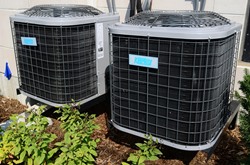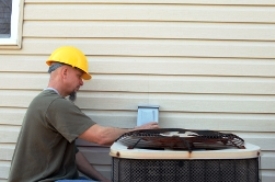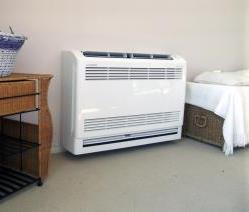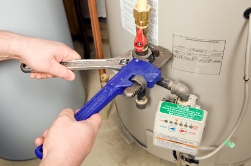How to Choose the Right Heating and Cooling Program near Santa Ana California
 Now that you have come to a decision on a career as a heating and air conditioning technician, the next step is to look for an HVAC trade school near Santa Ana CA. But with so many to select from, how do you decide on the best one to obtain the training that you need? Some potential students will make their choice based entirely on the price of tuition or how close the school is to their residence. Although these are relevant concerns, they are not the only ones to investigate. Just some of the other factors that you need to research are the graduation completion rates of the HVAC schools, their reputations, and if they are accredited by professional trade organizations. Those and additional criteria will be addressed in more detail later within this article. But before we examine how to select an HVAC technical school, let's take a look at what a heating and cooling specialist does to become a licensed skilled tradesman.
Now that you have come to a decision on a career as a heating and air conditioning technician, the next step is to look for an HVAC trade school near Santa Ana CA. But with so many to select from, how do you decide on the best one to obtain the training that you need? Some potential students will make their choice based entirely on the price of tuition or how close the school is to their residence. Although these are relevant concerns, they are not the only ones to investigate. Just some of the other factors that you need to research are the graduation completion rates of the HVAC schools, their reputations, and if they are accredited by professional trade organizations. Those and additional criteria will be addressed in more detail later within this article. But before we examine how to select an HVAC technical school, let's take a look at what a heating and cooling specialist does to become a licensed skilled tradesman.
How to Become an HVAC Pro
 HVAC is an acronym that is frequently used in the industry that stands for "Heating, Ventilation and Air Conditioning". HVAC technicians provide services for the installation, repair and maintenance of central air conditioners, furnaces, boilers, water heaters and heating systems. As professional tradesmen, they are commonly mandated to be licensed, however every state and regional municipality has its own criteria. Acquiring professional certification is not compulsory, but an optional way for Santa Ana CA HVAC technicians to demonstrate that they are highly proficient and knowledgeable in their area of specialization. There are several respected certifications within the field that are available. Following are some of the important ones.
HVAC is an acronym that is frequently used in the industry that stands for "Heating, Ventilation and Air Conditioning". HVAC technicians provide services for the installation, repair and maintenance of central air conditioners, furnaces, boilers, water heaters and heating systems. As professional tradesmen, they are commonly mandated to be licensed, however every state and regional municipality has its own criteria. Acquiring professional certification is not compulsory, but an optional way for Santa Ana CA HVAC technicians to demonstrate that they are highly proficient and knowledgeable in their area of specialization. There are several respected certifications within the field that are available. Following are some of the important ones.
- North American Technician Excellence (NATE). NATE is a nationally acknowledged certification for HVAC technicians. The certification is achieved by passing a proficiency examination and may be acquired in one or more specialties.
- HVAC Excellence. This certification makes available both a professional and a master specialist credential. Two years of professional experience together with passing a comprehensive examination are needed for the professional level certification. Master specialists must have three years of experience as well as a passing result on the professional level examination. Similar to NATE, certifications are provided in multiple specialties.
- EPA Section 608. This certification is necessary for techs that handle refrigerants. There are three types of certification available, one for small appliances, and the additional two for low and high pressure refrigerants.
Considering that licensing may be mandated in your area, and you may also wish to earn certification, it's imperative that you select an HVAC vocational school that will prepare you for both. And since you will most likely be working with refrigerants, make sure that the school you choose readies you for passing the EPA Section 608 exams.
HVAC Degree Training Programs

There are a number of choices available for HVAC training in a trade or technical school. You can attain a certificate, an Associate Degree, or a Bachelor's Degree. Acquiring a certificate will take the lesser amount of time, often completed in as little as six months, however some courses are longer. A certificate will qualify you for the majority of HVAC positions, especially if you are licensed and have certification applicable to the position. The degree training programs may provide a competitive advantage in the job market and will provide more in-depth training than the certificate programs. Below is a short description of each option offered near Santa Ana CA.
- Certificate. Normally requiring a high school diploma, certificate programs are very popular among beginning commercial or residential HVAC technicians. They furnish a strong foundation of skills for employment within the industry.
- Associate Degree. The Associate Degree in HVAC program supplies a more exhaustive background of heating & cooling systems than the certificate program. Normally taking 2 years to complete, a number of degrees include an internship or work-study program.
- Bachelor's Degree. The Bachelor's Degree in HVAC is tailored more for a career in management as well as business ownership. Some programs call for an Associate Degree, while others are a traditional 4 year program. In addition to mastering how to service and maintain heating and cooling systems, you will also learn how to design them.
Choosing the appropriate credential program will be dependent on what your long term career aspirations are, together with the time and money that you have to invest. One option is to begin with a certificate or even an Associate Degree program, and after getting some experience in the field in Santa Ana CA, later going back to obtain a Bachelor's Degree. If this is your approach, make certain to ask the HVAC technician school you are looking at about how their returning student program works.
HVAC Schools Online
Enrolling in an HVAC school online is one alternative in obtaining your training and receiving a certificate or degree. Almost all schools will require some attendance on campus to take part in hands on training. Some also offer internship or work-study programs in addition to or in place of practical lab work. But since the remainder of the classes may be attended via the internet, this alternative may be a more convenient solution for many Santa Ana CA students that are short on time. And many online degree programs are cheaper than other traditional choices. Even driving expenses from Santa Ana and study materials can be reduced, helping to make education more economical. And many online programs are fully accredited (more on this later). So if your job or family responsibilities have left you with limited time to attend classes, perhaps an HVAC online training program will make it less complicated to fit school into your busy lifestyle.
Questions For HVAC Training Programs

Once you have selected the type of certificate or degree that you wish to obtain, either on campus or online, you can begin to limit your list of schools. As you are no doubt aware, there are numerous HVAC vocational schools in the Santa Ana CA area and throughout the Country to select from. That's why it is essential to have a list of key qualifiers when making school evaluations. As formerly mentioned in our opening paragraph, location and tuition will undoubtedly be the first 2 variables you will take into consideration. Following are several additional ones that you will want to explore before enrolling in your school of choice.
Accreditation. Many HVAC trade schools in the Santa Ana CA area have earned either a regional or a national accreditation. They may earn Institutional Accreditation, which involves the school's programs as a whole, or Programmatic Accreditation, which pertains to a specific program, such as HVAC technology. Confirm that the school is accredited by a U.S. Department of Education recognized accrediting organization, for instance the Accreditation Board for Engineering and Technology. Along with helping ensure that you obtain a quality education, it may help in obtaining financial assistance or student loans, which are often not available for non-accredited schools. Also, many states mandate that the HVAC training course be accredited for it to be approved for licensing.
High Completion Rates. Ask the Heating and Air Conditioning schools you are reviewing what their completion rates are. The completion rate is the percentage or portion of students who enroll in and complete the course. A lower completion rate might suggest that students were dissatisfied with the course and quit. It may also suggest that the instructors were not qualified to train the students. It's similarly imperative that the schools have higher job placement rates. Older and/or more reputable schools may have a more extensive directory of graduates, which may result in more contacts for the school to use for their apprenticeship and job placement programs. A high job placement rate will not only affirm that the school has a good reputation within the industry, but additionally that it has the network of Santa Ana CA HVAC employers to assist students acquire apprenticeships or employment.
Apprenticeship Programs. Most HVAC training programs are taught along with an apprenticeship or an internship program. Those participating trade and vocational programs will help place you in an apprenticeship program within their network of HVAC businesses or labor unions. Check if the schools you are considering have referring relationships with local Santa Ana CA HVAC contractors. An apprenticeship not only provides a valuable experience by furnishing hands-on training, but it also furnishes job opportunities and helps to form relationships in the local HVAC professional community.
Modern Facilities. Make certain that the school facilities and the tools that you will be instructed on are up-to-date and what you will be working with on the job. If you are currently in an internship or an apprenticeship, talk to the HVAC technician you are working under concerning what you should be looking for. If not, ask a local Santa Ana CA HVAC company if they can provide some pointers. Also keep in mind that unless you are able to move, the school must be within driving distance of your Santa Ana CA home. Remember that if you decide to attend an out-of-state school, besides the added moving costs there may be higher tuition fees compared to in-state residents.
Smaller Classes. It's desirable that you get as much one-on-one training as possible, which can be difficult in bigger classes. Ask if you can sit in on a few of the classes so that you can see how large they are and experience the interaction between teachers and students. Speak with several of the students and get their opinions relating to class sizes and instruction. Last, talk with a few of the teachers and find out what their level of experience is and what certifications or degrees they hold.
Flexible Scheduling. Verify that the class schedules for the schools you are reviewing are flexible enough to handle your needs. If you can only go to classes at night or on weekends near Santa Ana CA, check that the programs you are reviewing offer those options. If you can only attend part-time, make certain that the school you select permits part-time enrollment. Additionally, ask what the protocol is to make-up classes should you miss any due to work, illness or family responsibilities.
Find Out More About Santa Ana HVAC Courses Near You
Earn Your HVAC Degree and Certification
Choosing the ideal HVAC school course is an important beginning toward a fulfilling career in the heating and air conditioning trade. As we have covered in this article, you need to select a Heating and Cooling training program and a certificate or degree program that are both accredited and have outstanding reputations within the HVAC community. Other things to look for are ample practical training and state-of-the-art facilities. You need to visit each of the schools in person that you are most interested in to inspect the campus and talk with both the faculty and current students. Try to get a feel for the quality of the teaching and the interaction between them. In addition, inquire about scheduling choices and whether or not night or weekend classes are available if needed. And remember to ask about financial assistance and student loan options too. If you ask the appropriate questions as we have outlined in our checklist for assessing schools, you'll be able to filter your options so that you can make an informed decision. With the right training, hard work and dedication, you can ultimately become a licensed HVAC professional in Santa Ana CA.
